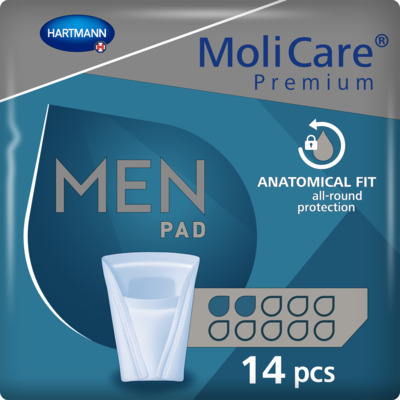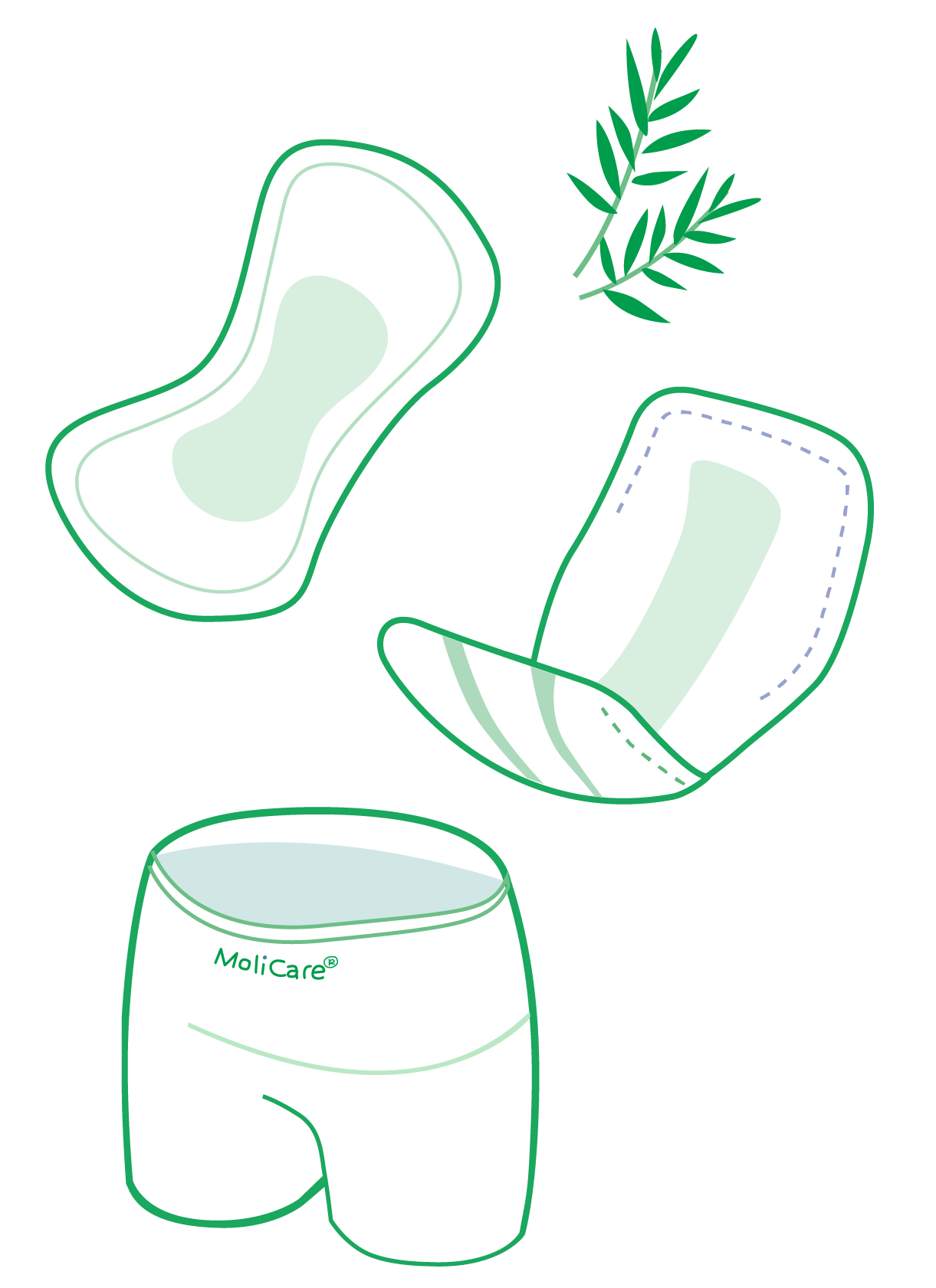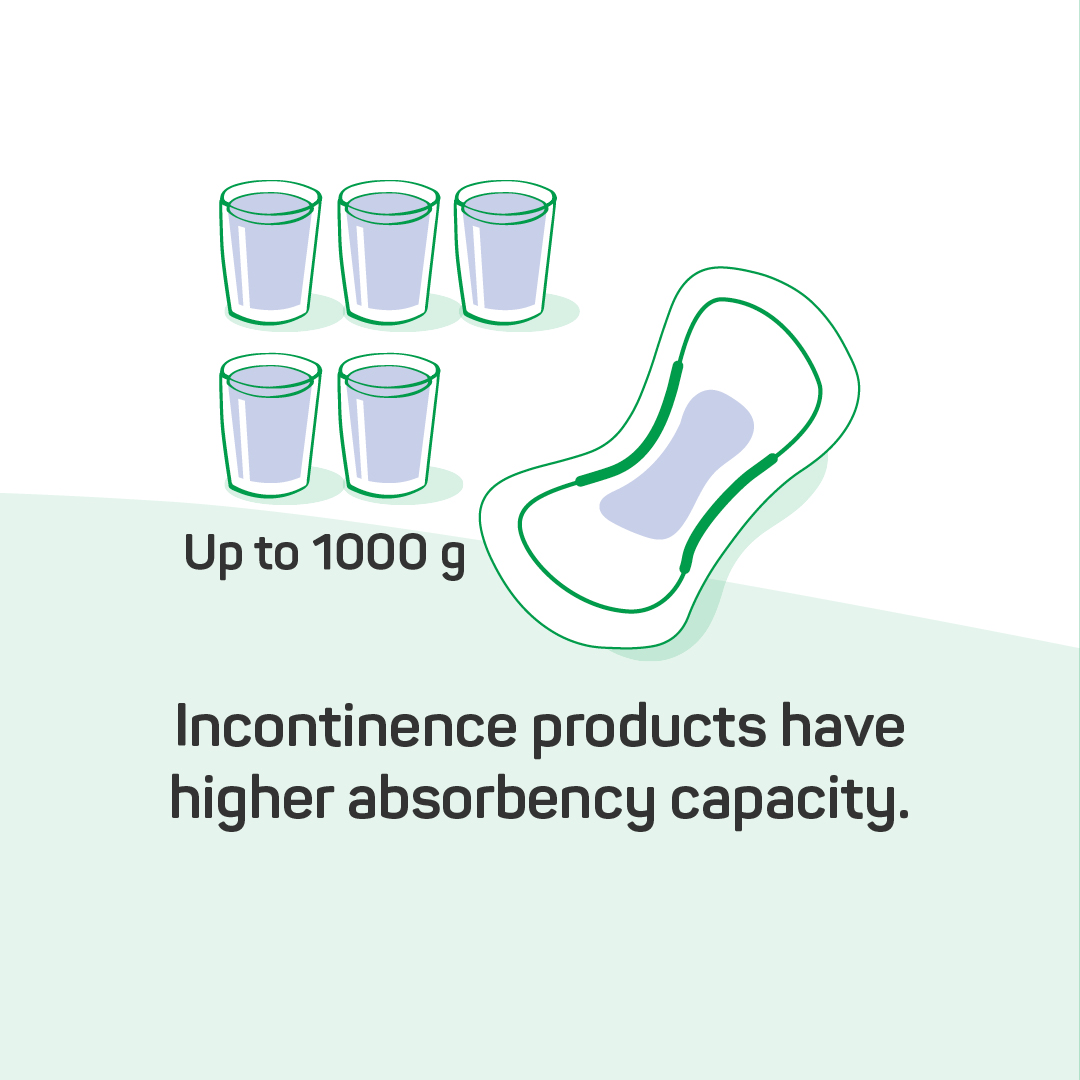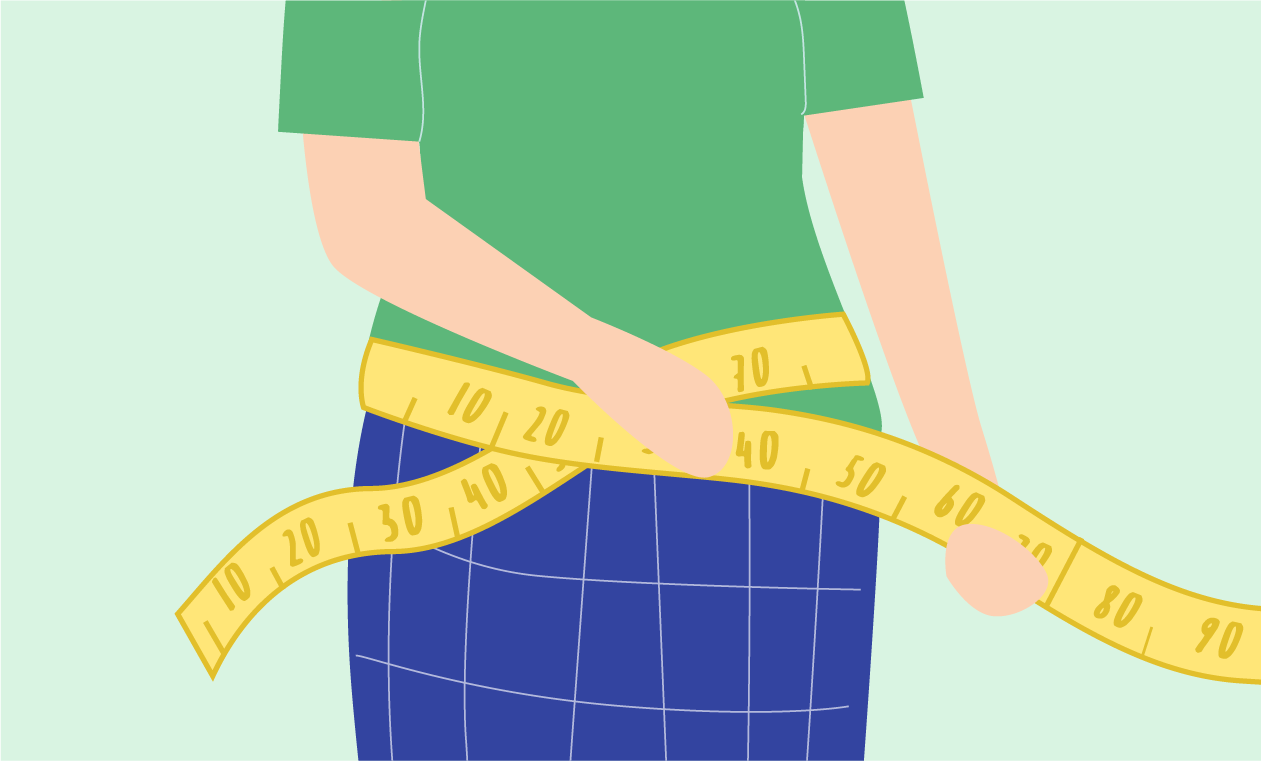Incontinence Advice
What is the difference between incontinence pads and menstrual pads?
Many women and men affected by incontinence use conventional menstrual pads to capture any urine lost. But pads specifically designed for incontinence are even more reliable and still provide discreet help with bladder weakness.
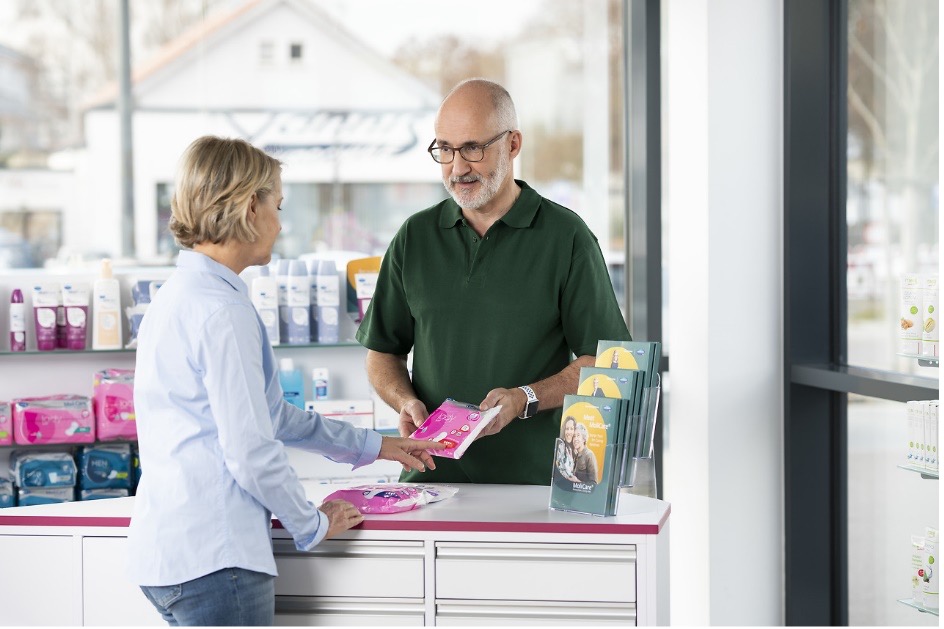
Woman buys incontinence pads
Why women and men with incontinence often use pads
It might seem to make sense to use menstrual pads instead of incontinence pads.: For many women it is already routine to buy and use panty liners. If mild bladder weakness suddenly develops, it is therefore perfectly natural to use normal panty liners for this situation as well. And men often find themselves in the situation of buying menstrual pads for their female partners. They are already familiar with this product. Camouflaged as a purchase for a female partner, men affected by incontinence also initially use menstrual pads due to shame and uncertainty about appropriate incontinence products.
Those affected often feel ashamed when urinary or faecal incontinence starts, which is why they also shy away from buying appropriate incontinence aids. The obvious solution for those affected is to buy pads. It is important to know that incontinence pads can meet your specific needs considerably better than panty liners – and you will also save money in the long term.
Read more about signs of incontinence in our new article
Why panty liners are unsuitable for incontinence
At first glance pads are more cost effective than special incontinence pads. However, they are only intended to absorb menstrual flow. Blood is thicker than urine, and escapes more slowly and in smaller volumes than urine. Conventional panty liners therefore cannot absorb the volume of urine and have to be changed a lot more frequently than incontinence pads that have a higher absorptive capacity.
Sonya Meyer, national clinical consultant at HARTMANN, explains:
‘Menstrual pads can be used with heavy periods but the pads usually only contain wood pulp and not much superabsorber. And because menstrual blood clots, it easily sticks to the fibres or the pulp of the pad. This is not the case with urine. A menstrual pad usually does not keep the skin dry and odour may also be an issue. Menstrual pads are therefore expensive because they very quickly stop being able to absorb liquid and have to be changed 10 times or more a day.’
Discover more about Causes of urinary incontinence
There are also period pads that are specifically identified as products to use with incontinence. However, they only have a low absorptive capacity - usually only able to absorb 50 to 100 millilitres and so are not comparable to products specifically designed for incontinence. This is because the special pads not only have the necessary absorptive capacity but are also geared toward the size, mobility and the sex of the person affected. The products are differentiated by their absorption capacity: from mild bladder weakness (urine loss of about 100 ml in 4 hours) to heavy urinary incontinence (about 300 ml).
Find your best product
Search Find your best productEasily order MoliCare® incontinence products online from HARTMANN
With the right incontinence pads you can work, play sport and sleep easily safe in the knowledge that you have the necessary protection. If you would like to use pads specifically developed for incontinence but would prefer not to buy them in a pharmacy near you, you can orderMoliCare® products online at any time of day or night. Depending on the severity, type and frequency of the incontinence as well as your personal preference and fit, MoliCare® from HARTMANN offers the following options:
- If you would like the products to resemble menstrual pads, we recommend the anatomically shaped pads MoliCare® Premium lady pad and MoliCare® Premium MEN Pads, which are worn in normal underwear with the help of the adhesive strip and are available with different absorbency levels.
- Along with pads there are also the anatomically shaped disposable pants MoliCare® Premium lady pants and MoliCare® Premium MEN Pants that are worn like normal underwear. These are also available in different absorbency levels and sizes.
Are you unsure which product will meet your needs? Then use our product finder and order free products to test out. Decide which products are right for you and live carefree again!
Sources:
1 Kontinenz, Inkontinenz, Kontinenzförderung, Praxishandbuch für Pflegende [Continence, incontinence, continence promotion, clinical handbook for nurses], Hayder, Kuno, Müller, Huber Verlag, page 35 ff
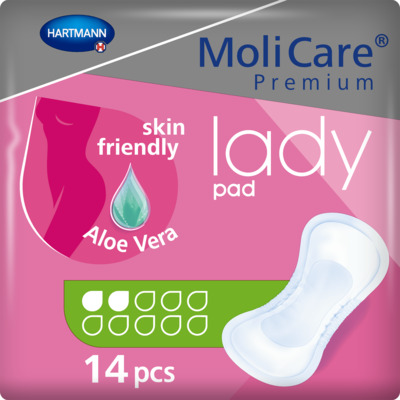
MoliCare® Premium Lady Pad 2 Drops
Small shaped absorbent pads for women with light bladder weakness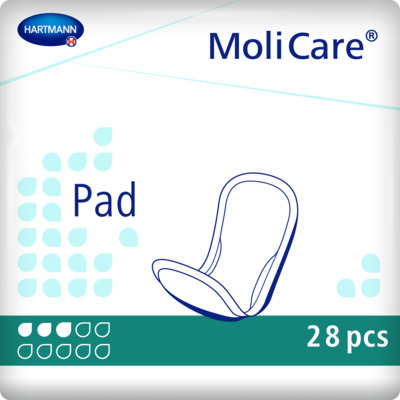
MoliCare Pad 3 Drops
Small body shaped disposable incontinence pads for light to moderate bladder weakness for men and women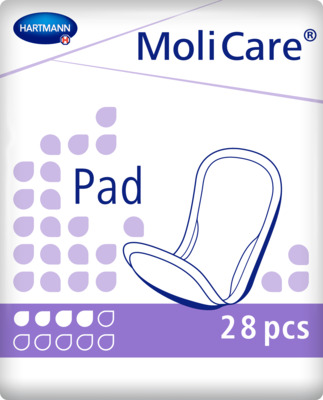
MoliCare Pad 4 Drops
Small body shaped disposable incontinence pads for light to moderate bladder weakness for men and women